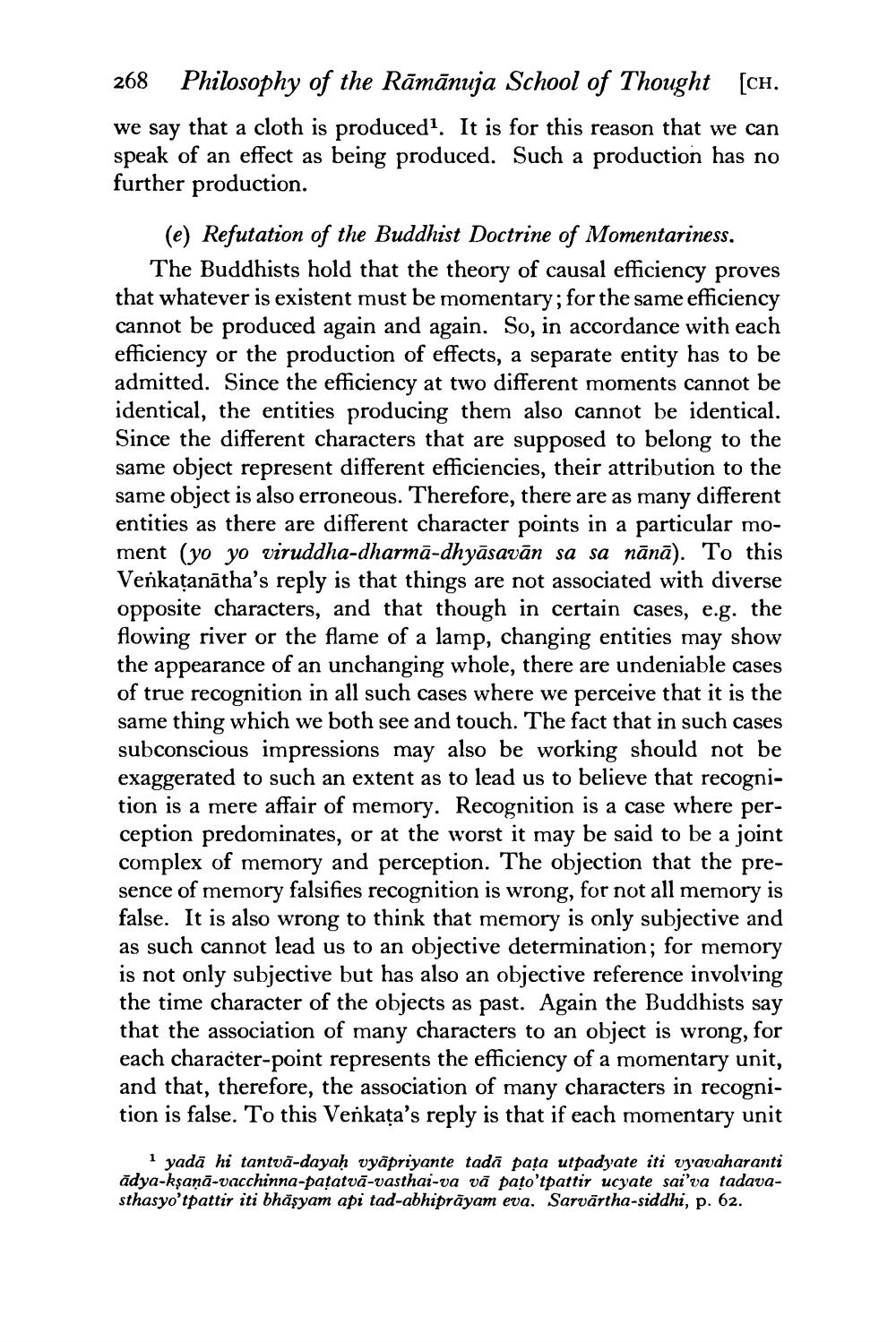________________
268 Philosophy of the Rāmānuja School of Thought [ch. we say that a cloth is produced. It is for this reason that we can speak of an effect as being produced. Such a production has no further production.
(e) Refutation of the Buddhist Doctrine of Momentariness.
The Buddhists hold that the theory of causal efficiency proves that whatever is existent must be momentary; for the same efficiency cannot be produced again and again. So, in accordance with each efficiency or the production of effects, a separate entity has to be admitted. Since the efficiency at two different moments cannot be identical, the entities producing them also cannot be identical. Since the different characters that are supposed to belong to the same object represent different efficiencies, their attribution to the same object is also erroneous. Therefore, there are as many different entities as there are different character points in a particular moment (yo yo viruddha-dharmā-dhyāsavān sa sa nānā). To this Venkatanātha's reply is that things are not associated with diverse opposite characters, and that though in certain cases, e.g. the flowing river or the flame of a lamp, changing entities may show the appearance of an unchanging whole, there are undeniable cases of true recognition in all such cases where we perceive that it is the same thing which we both see and touch. The fact that in such cases subconscious impressions may also be working should not be exaggerated to such an extent as to lead us to believe that recognition is a mere affair of memory. Recognition is a case where perception predominates, or at the worst it may be said to be a joint complex of memory and perception. The objection that the presence of memory falsifies recognition is wrong, for not all memory is false. It is also wrong to think that memory is only subjective and as such cannot lead us to an objective determination; for memory is not only subjective but has also an objective reference involving the time character of the objects as past. Again the Buddhists say that the association of many characters to an object is wrong, each character-point represents the efficiency of a momentary unit, and that, therefore, the association of many characters in recognition is false. To this Venkata's reply is that if each momentary unit
1 yada hi tantvā-dayaḥ vyāpriyante tada pața utpadyate iti vyavaharanti ādya-kşaņā-vacchinna-pațatvā-vasthai-va vă pato'tpattir ucyate sai'va tadavasthasyo'tpattir iti bhāsyam api tad-abhiprāyam eva. Sarvārtha-siddhi, p. 62.




